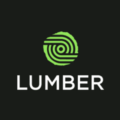If You Need Me, I’ll Be on Holodeck 4. Or at Lowe’s.
What seemed like a sci-fi fantasy—when Riker and the Star Trek crew retreated to the Holodeck—isn’t any more. In November 2015, Lowe’s introduced the Holoroom to customers—3D visualization made possible by Oculus Rift’s headgear and Marxent’s platform. Kitchen, bathroom, and home improvements are now more tangible (and futuristic) than ever before, giving customers the power to swap-out appliances, test different paint colors, and explore combinations with extreme ease, and all before purchase.
As entrepreneurs, corporates and investors pour energy and resources into virtual reality, we’re flirting with a major platform shift in technology with the potential to change our daily lives. As early stage investors at Converge VP, we target emerging technologies (like virtual reality) and their impact creating new behaviors, markets, and budgets. Compelling use-cases for virtual and augmented reality are rapidly coming to home improvement, gaming, education and more. First, a quick decoding of the terminology: Virtual Reality (VR) is a computer-created 3D world accessed via a head-mounted display (HMD) and it’s entirely virtual. Augmented Reality (AR), by contrast, is computer-generated simulation of an environment or rendering of information that gets superimposed onto or into the real world. New products leveraging VR and AR technologies are emerging at an accelerating pace, yielding consumer and enterprise adoption around the globe—this piece is a primer on VR applications.
The benefits that come from VR applications are so compelling that adoption will likely parallel the pace of mobile adoption. First, we will see VR change the way we consume entertainment in the home, and gaming platforms are gearing up for the first adoption wave. Deloitte predicts 2016 VR headset sales will reach 2.5 million devices sold, generating $300 million in revenues, primarily driven by gaming products.
With consumer adoption of VR for immersive entertainment in the home approaching rapidly, we made our first VR investment last year, partnering with the music-gaming pioneer, Harmonix. With Harmonix Music VR, developed for Oculus Rift VR goggles and soon for Sony’s PlayStation VR, players can immerse themselves in their own music fantasies on-stage. Simply by staring at objects, gamers can initiate actions: look at a flash pot on stage to set-off pyrotechnics, eye the drummer to count-in a new song, or look at the guitar pedals to add sound effects. In Harmonix’s words: “the immersive experience of VR allows new gaming paradigms where technology and art meet to offer consumers something magical and unprecedented.”
Outside the home, VR’s immersive power is being applied to shopping, entertainment, travel, education, healthcare, rollercoasters, and more. Touching on three of these verticals:
Shopping
VR enhanced or enabled commerce has huge potential—companies like Trillenium are creating virtual stores to shop for your favorite brands via VR. Working with ASOS, one of Europe’s largest online retailers, Trillenium has a first look into virtual user experiences and how consumers will embrace VR commerce—including testing a social virtual shopping experience where friends can explore retail products together. Marxent, as previously mentioned, developed its VisualCommerceTM platform to configure and visualize 3D products, and is currently powering 19 Lowe’s Holorooms across the United States.
Entertainment
Entertainment will change with movies that virtually put the audience in the movie, or at the stadium on game day, or in the front row at a concert. IMAX’s CEO recently announced plans to bring premium, cinema-like VR experiences to local multiplexes, where, after the movie ends, moviegoers can then pay for a premium VR experience related to the movie. “You’d go to a different place in the multiplex and put on VR glasses and you would fly the Millennium Falcon or see how many storm troopers you can shoot,” CEO Gelfond explains.
The New Revolution roller coaster at Six Flags Magic Mountain added a VR headset (using a Galaxy phone) for a visual experience that simulates a plane ride turning into an air battle, timed in-sync with the motion of the ride. Surprisingly, riders are saying the VR experience makes them feel less queasy!
Healthcare
In healthcare, VR applications are being tested or deployed for pain relief, stress relief, and treatments for PTSD, phobias and anxiety. As a lower-cost and non-addictive alternative to narcotics, the potential for VR to address or at least ameliorate a myriad of mental health issues is heartening. Another fascinating use of VR is what NASA is doing to help astronauts deal with ICE (isolated and confined environments) via ANSIBLE (video here) by providing “psychological home-away-from-home” experiences.
As The Consumer Goes, So Goes The Enterprise
With VR adoption taking-off for consumer applications, we’re actively surveying where and how the enterprise will adopt VR and then AR for productivity gains and increased communication capabilities.
As investors look to partner with entrepreneurs and companies delivering VR and AR enterprise solutions, the compelling use-cases are productivity gains that either increase revenues or decrease costs, as has always been the case with enterprise software. The powerful combination of both—enabling more sales at lower cost—is the ‘two-fer” we are hunting for. Think of VR enabled prototyping, especially for complex, big-ticket capital equipment that can be demo’d, alternatives evaluated, and then specs finalized and the sale closed—all before die casting is even started. Or, think of commercial real estate developers, where proposed designs are rendered in VR. Or real estate brokers newfound ability to show more properties in a fraction of the time.
Technology Advancements Deliver, And Will Keep Delivering
Across-the-board improvements from chip processing power, to wider view-ranges in head-mounted displays (HMDs), to multi-modal interfaces—all of these advancements and more—have converged to enable an amazing VR experience at a price-point that’s ushering in widespread consumer adoption of VR. As chip manufacturers improve frame rate, responsiveness, and latency, CPU and GPU power is able to deliver 90 frames-per-second. These advancements address one of the huge adoption roadblocks of VR, motion-sickness or simulator-sickness, which occurs when images jitter or stall. Technological advancements will continue to push more rendering (think holographic images) via increased processing power and hardware innovation, making immersive experiences even richer.
Given the out-of-this-world experience that VR technology can now deliver, and paired with a reasonable price-point, it’s exciting and certainly plausible to see “AR/VR as the fourth consumer technology platform shift after the PC, web, smartphone/tablet revolutions,” as suggested by Tim Merel, CEO of Digi-Capital. The potential use-cases for VR applications, and then AR, are exploding and we’re entering an exciting era when innovators are experimenting, testing, and developing powerful applications for this new platform. Just as mobile became a new channel to reach customers, accelerate decision-making and buying cycles, and is a huge productivity enabler, so too will VR. Grab your VR goggles and I’ll see you on Holodeck 4.



























